on to Agora
Outside the museum of ancient Agora (which was closed--it's expected to be open for the Olympics)
is this headless statue, and these wild dogs. Caption this picture LET SLEEPING DOGS LIE
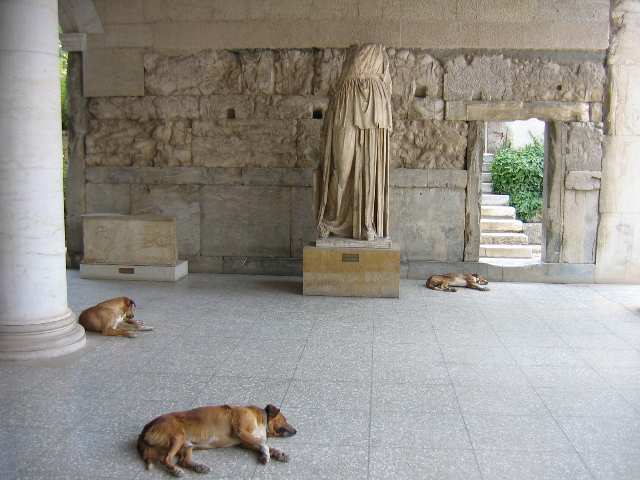
There isn't much left standing in ancient Agora, and what is here leaves much to the imagination.
Take these giant statues--they stand at the front of what was once, the Concert Hall of Agrippa, built in 15 BC.
In 150 AD its roof collapsed, and it was rebuilt, only smaller this time. This part became a porch,
supported in part
by these figures, and the building was repurposed as a lecture hall.
In 267 AD it was burned by barbarians (don't ask me how a marble building burns--I'm just repeating the information that was posted!)
and some 130 years later, about 400 AD, a gymnasium was built on its ruins.
The statues, 4 in all, still stand. The gymnasium is, you guessed it, in ruins.
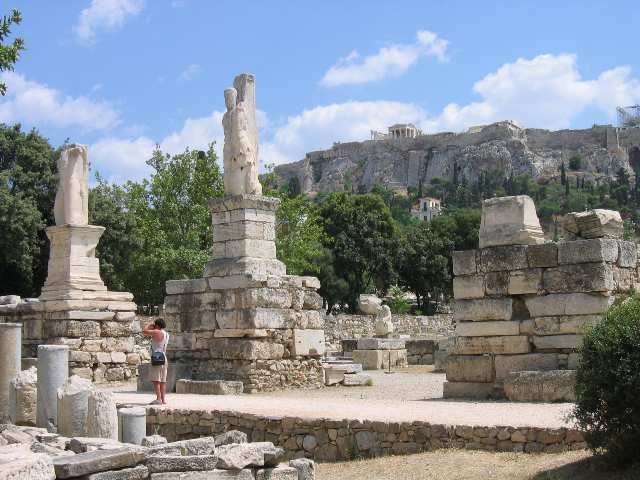
There IS one building left standing, and not in bad shape either, on the small hill of Agoraios Kolonos.
This is the Thesseion, the best preserved anceint temple in Greece. Construction of Thiseio began in 449 BC-- 2 years before the Parthenon.
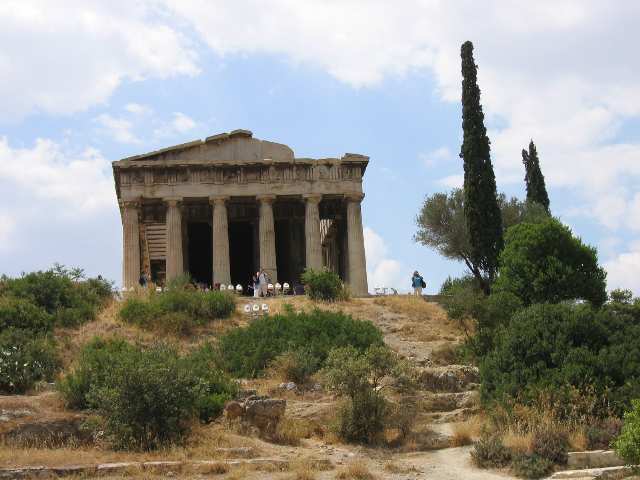
In spite of its name, taken from the presentations of Theseus which adorn it, it was originally a temple of Hephaestus,
protector of metal workers, and of Ergani Athena, protector of potters and home handcrafters.
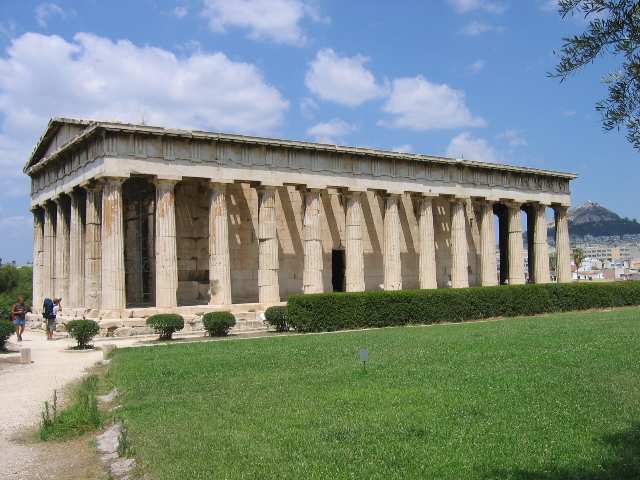
Rising in the distance is Lycabettus Hill.
I'll be going there tomorrow for some great 360-degree views of the the city.
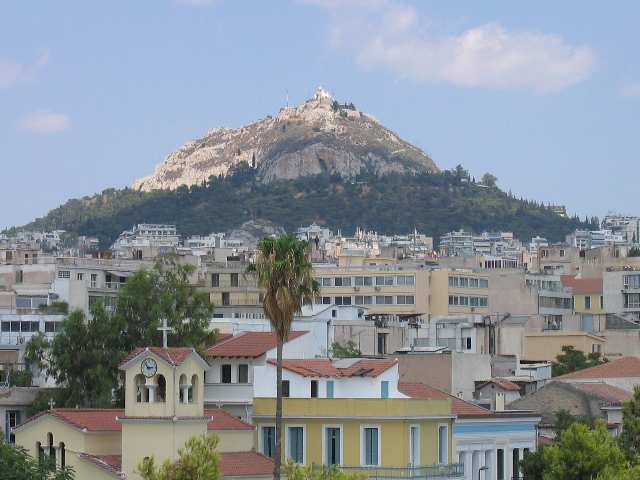
The ruins of ancient Agora; the Acropolis beyond.
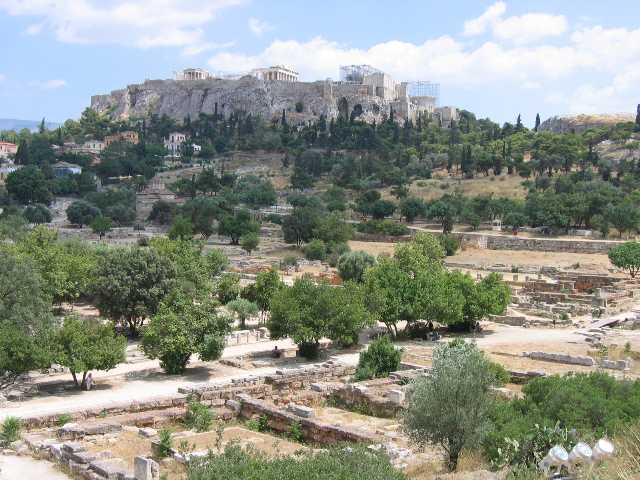
A last look back before leaving Agora.
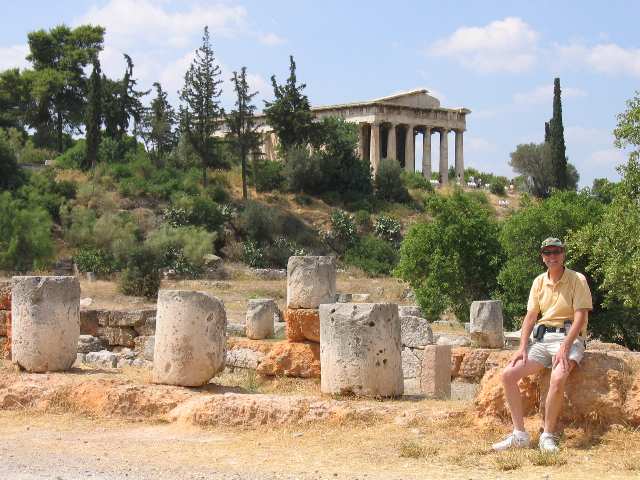
Moving on, leaving ancient Agora and walking thru the Plaka area again, now we're looking across Anmalias Avenue at Hadrian's Arch.
It was built in 131 AD by the Athenians to honor their Roman emperor.
Beyond the arch is the Temple of Olympian Zeus, admission 2 Euros.
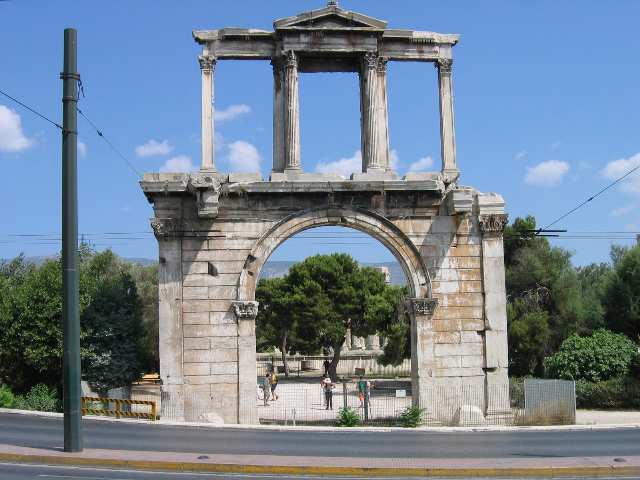
The Temple was started in the 6th century BC, and wasn't completed until 700 years later (and this was before labor unions).
Only 14 columns remain standing today, out of a total of 104 originally.
They once held up a HUGE temple dedicated to the father of the Gods - Zeus.
It's the biggest Temple of antiquity.
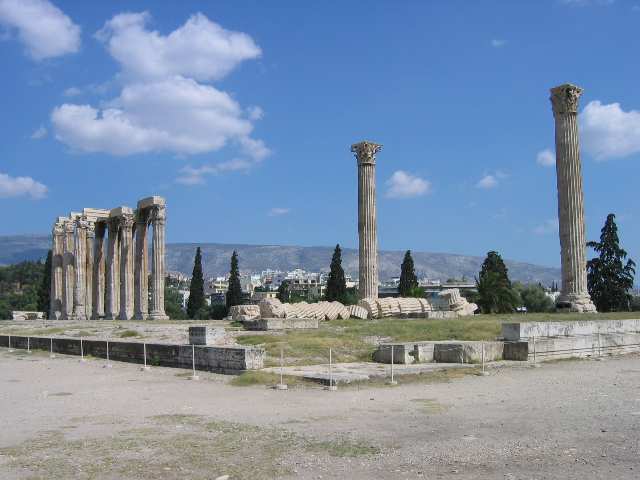
Obviously from the picture above, many of the columns have fallen over the past 2000 years. Here's what a fallen column looks like.
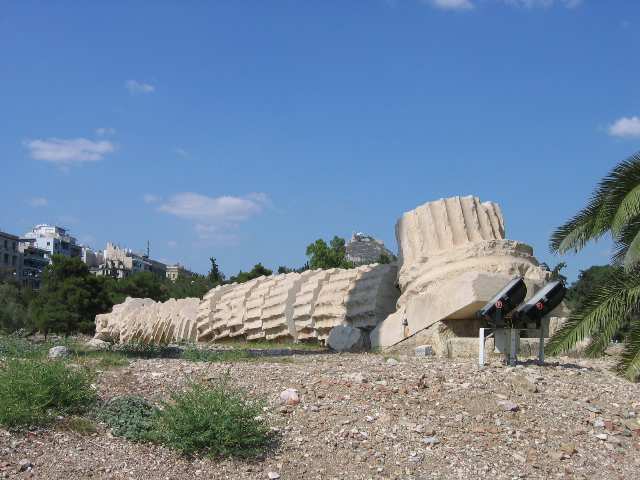
One column of those still standing, over at the left and near its top, has been strapped to prevent its going to pieces.
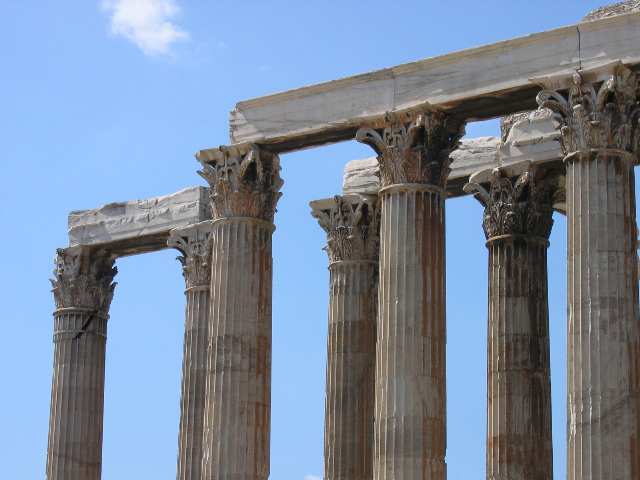
About a 10-minute walk away is the Panathinaiko Stadium. It looks pretty good for something from the 4th century BC,
but it's been restored twice. It seats 70,000 spectators. The first modern Olympic games were held here in 1896.
Workers are feverishly trying to get the stadium ready for this summer's Olympics;
it will be the site for the Archery competition (which isn't scheduled to be televised
in the U.S.).
Still, if you watch the coverage of the Women's Marathon on Sunday August 22, or the Men's on August 29,
the runners will cross the finish line inside the stadium, so you'll see it then.
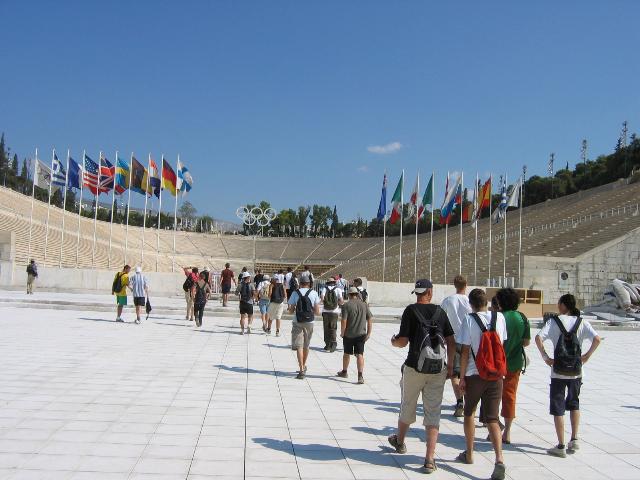
A diversion here--just across Konstantinou Street from the stadium, this Athens city trolley bus drove by with a BANG! It was the sound of its overhead pickup arms losing contact with the catenary wires.
Bus comes to a stop, driver gets out, drops a ladder down, and works on re-attaching the arms to the wires. It all worked out, the bus was back in motion after just a couple of minutes.
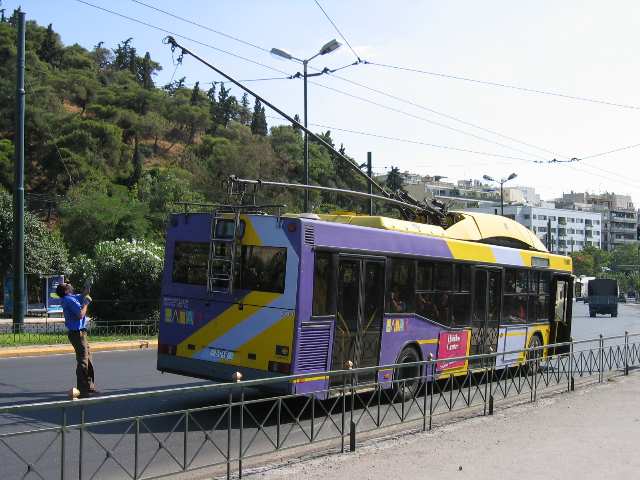
At this point, I headed back through the Plaka to Monastiraki Square (see picture at the top of this page), and a Big Mac with my name on it. Time was about 6 o'clock.
I think I've got a blister on my fourth toe the SIZE of my fourth toe. On the move again, I passed the Greek Parliament, built between 1834 and 1838 as the palace of the first kings.
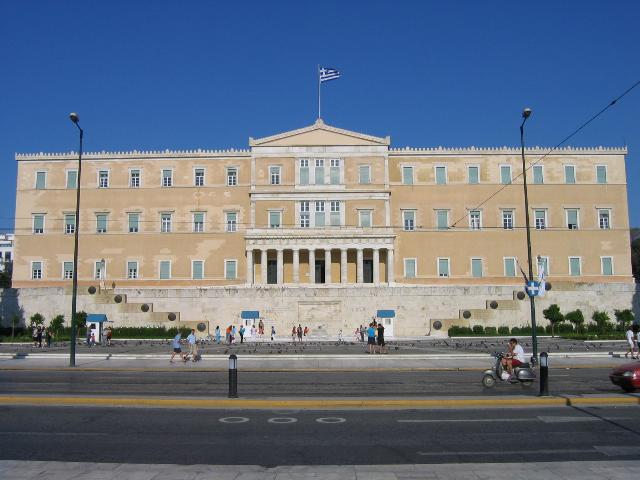
The Ledra Mariott is 'home' for me for me until I move to the Media Village at the end of July. It's a welcome sight.
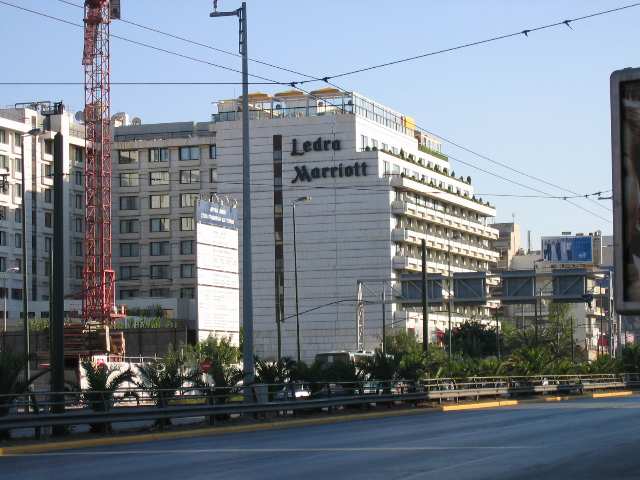
This a typical street sign in Athens. They're mounted on the sides of buildings at each street corner,
making them hard to see from the street at times. This is the one on the Mariott,
and gives the address as 115 Andrea Syngrou Avenue, in two alphabets.
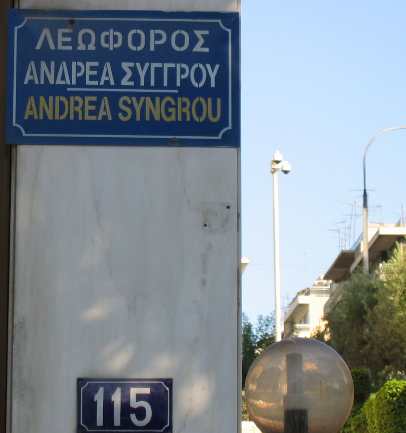
Most traffic signs display their legends in both Greek and modern alphabets, for example,
this sign over Syngrou Ave. near the hotel.
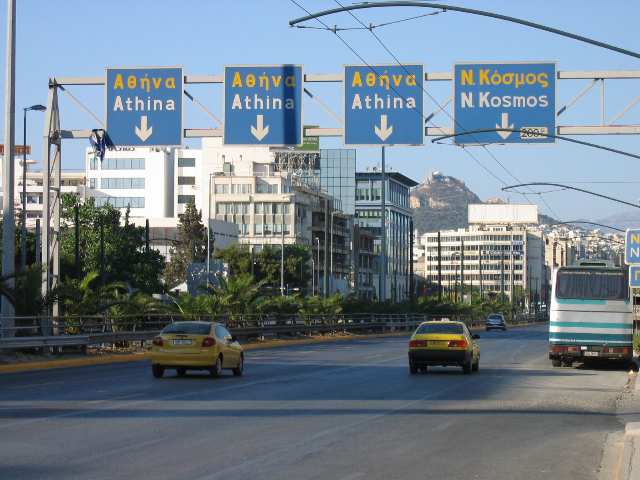
Enough history for today. Thanks for coming along!
Click to go back to Jeff's Athens Homepage
or
Click to go on Jeff's next trip